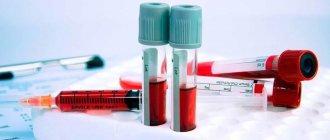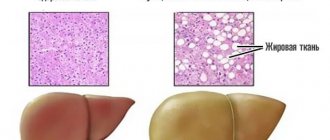In diagnosing HIV, an important role is played by the earliest possible detection of the disease in a person. A series of tests are prescribed. Will a general blood test show AIDS and HIV? It is impossible to make a diagnosis based on this analysis alone; other highly specific studies will be necessary.
However, in a detailed analysis, there are some indicators whose changes are characteristic of infection with this virus. A general blood test may not be normal if a person is infected with HIV.
Why is a general blood test prescribed?
Any disease is reflected in the qualitative and quantitative composition of the patient’s biomaterials (blood, urine, saliva, etc.). And a complete blood count (CBC) for HIV is no exception. The purpose of this laboratory study is to determine the state of immunity, which changes significantly when affected by HIV infection.
CBC is the initial screening method for examining patients for infection with the HIV virus. Its advantages:
- low cost of research;
- quick results;
- changes in biomaterial during HIV infection are very indicative.
Thanks to this study, a conclusion is made about the person’s health status and either send him for further examination or give a diagnosis of “Healthy”.
Blood tests for HIV are prescribed in the following cases:
- Hospitalization to a hospital for planned surgery. In this case, it is necessary to donate blood in order to minimize the risk of infection of medical personnel. Operations on HIV-infected people are performed with increased protective measures.
- Upon the onset or in the process of planning pregnancy. For pregnant women, the norm for taking an HIV test is three times during the period of bearing a child. Diagnosis is done to prevent infection of the fetus in utero, during childbirth and during breastfeeding. In the above cases, the virus is transmitted to the child with a high degree of probability.
- Presence of signs of other infectious diseases that often accompany HIV infection. These include: Pneumocystis pneumonia, herpes infection, tuberculous lesions of internal organs.
- After possible infection through unprotected sex. A person independently goes to a clinic, where he is examined in conditions of complete anonymity.
- The appearance in a patient for no apparent reason of symptoms such as sudden weight loss, apathy, constant fatigue, sweating at night, periodic causeless increase in body temperature to 37.5 ° C, diarrhea.
- Blood diagnostics for testing HIV infection are performed annually by medical workers who have direct contact with the biological fluids of patients.

In the above situations, regardless of what the general blood test shows, specific tests for HIV are additionally carried out: ELISA or immunoblot.
More about virus load
The first and perhaps the most important indicator that should be assessed when thinking about contracting HIV is the viral load. This test is able to react to specific RNA in the human body, clearly highlighting pathogens of a specific type. The load analysis received its name because it is used to determine the number of RNA units that are found in one milliliter of biological material.

It is important to keep in mind that after infection, fluctuations in this important indicator are allowed. Patients often show concern if they have started treatment only recently or do not receive it at all.
However, there are only two cases where you need to worry.
Firstly, contacting a doctor is mandatory if the indicators remain consistently elevated for a long time, despite the medications used. This may indicate either incorrectly selected therapy or a severe weakening of the immune system. Secondly, consultation is required if the new analysis shows a load that is three times higher than that obtained in the previous result.
It is important to remember that among the fair sex the viral load is usually slightly lower than among men. Something has not yet been possible to explain this
Doctors suggest that it all comes down to the characteristics of the immune system.
Patterns and changes in CBC in HIV-infected patients
The presence of HIV pathogens cannot be determined in a general blood test, but some signs of the development of the disease are visible.
Lymphocytes
The normal content of these cells is 25-40% or 1.2-3×109/l. At the beginning of the development of the disease, an increase in this indicator (lymphocytosis) is observed due to the body’s increased fight against viral infection. As the disease progresses and affects the human immune system, a critical decrease in the level of lymphocytes in the blood (lymphopenia) is detected. In HIV, it is mainly the fraction of T-lymphocytes that decreases.
Neutrophils
This type of leukocyte is activated immediately after infection with the virus. Neutrophils carry out the process of phagocytosis (absorption of viral cells). This subsequently leads to their destruction and a decrease in their number - neutropenia. The normal content of these cells is 45-70% or 1.8-6.5 × 109/l. A decrease in the number of neutrophils in the blood is not specific to HIV infection, since the phenomenon is observed in all infectious and inflammatory diseases.
Mononuclear cells
These atypical cells (lymphocytes with one nucleus) are a type of leukocyte. Mononuclear cells appear in a blood test when infectious agents (viruses or bacteria) enter the body. Normally, these immune cells should not be present in the biomaterial.
Platelets
Platelets play an important role in blood clotting processes. Normally, an adult has from 150 to 400 × 109/l blood platelets. When infected with HIV, the platelet count decreases. Clinically, this fact is manifested by the development of various types of bleeding: internal, external; the occurrence of petechiae (pinpoint rash) on the skin and hemorrhages on the mucous membranes.
Red blood cells
This indicator is not so specific for infection with the human immunodeficiency virus. The number of red blood cells often decreases with this pathology. This action occurs due to the influence of the virus on the bone marrow, in which blood formation occurs. The norm is considered to be the content of erythrocytes in biomaterials in the amount of 3.7-5.1 × 1012/l.
However, sometimes an increase in the number of red blood cells is detected in the CBC during immunodeficiency. This occurs in pulmonary diseases accompanying the development of HIV infection. These diseases include pneumonia and tuberculosis.
Hemoglobin
Often with HIV, a decrease in hemoglobin levels is detected, which indicates the development of iron deficiency anemia. Hemoglobin, an iron-containing protein, is located on the surface of red blood cells and is involved in the delivery of oxygen to all cells of the body. When its amount decreases, tissues suffer from hypoxia (oxygen deficiency). Clinically, anemia is manifested by weakness, dizziness, pale skin, and increased heart rate. Normal hemoglobin levels in men are 130-160 g/l, in women – 120-140 g/l.
Erythrocyte sedimentation rate
When infected with HIV, there is a significant increase in this indicator. Normally, in men, ESR ranges from 1 to 10 mm/h, in women – from 2 to 15 mm/h. Acceleration of ESR is not specific for viral damage. A similar sign is characteristic of any infectious and inflammatory processes in the body.
Sometimes, with HIV infection, the ESR may not increase for several years, and then increase sharply.
Thus, a general blood test does not allow 100% detection of the presence and stage of development of HIV infection. However, this research method is important for doctors at the initial stages of diagnosing the disease.
What is immune status?
Immune status determines the number of different cells of the immune system. For people with HIV, the number of CD4 cells, or T-lymphocytes, is important - white blood cells responsible for “recognizing” various pathogenic bacteria, viruses and fungi that must be destroyed by the immune system. CD4 cell count is measured as the number of CD4 cells per milliliter of blood (not the whole body). It is usually written as cells/ml. The CD4 cell count in an HIV-negative adult typically ranges between 500 and 1200 cells/mL. HIV can infect CD4s and make copies of itself in them, causing the cells to die. Although cells are killed by HIV every day, millions of CD4 cells are produced to replace them. However, after some time, the CD4 count may decrease and even drop to dangerous levels.
Complexes with this research
Entry into IVF Examination when a woman enters the IVF procedure RUB 11,050 Composition
Examination during pregnancy. 1st trimester 7 190 RUR Composition
Pregnancy planning. Diagnosis of infections 14 tests for expectant mothers 4,530 RUR Composition
IN OTHER COMPLEXES
- Examination during pregnancy. 3rd trimester 3,520 RUR
- Preparation for IVF for a man RUB 2,800
- Hospital complex 860 R
- Expanded hospital complex RUR 2,880
- Male infertility. Extended examination RUB 16,380
How to take it
For urine analysis, morning urine is collected in a special disposable container. It is better to skip the first portion and collect the second. The volume of urine for analysis is about 70 ml. Before taking a biochemical urine test, it is not advisable to take medications (this does not apply to taking ARV drugs). Vitamin C intake can have a particularly strong effect on the results of biochemical urine tests.
In addition, transportation of urine at sub-zero temperatures is not allowed: salts that precipitate in the “frozen” sample can be interpreted as a pathology in the functioning of the kidneys.
Main rules of procedure
Very often, a complete blood count is prescribed as a precautionary measure.
Taking into account the likelihood of a prolonged asymptomatic course of the disease at its various stages, specialists very often play it safe. Early diagnosis of HIV will not only confirm or deny the presence of human immunodeficiency virus in the blood (will show whether the individual is sick), but will also prevent the progression of symptoms

If the first test showed you have HIV infection, do a repeat test to rule out false variants
Regarding a general blood test when diagnosing pathology, doctors have a number of tips.
General recommendations
- If a person knows about his illness, in this case he needs to donate blood regularly - once a quarter. This measure is resorted to so that a specialist can monitor the course of the disease: if something changes, adjust the therapeutic course.
- An urgent question for those infected: if a patient is sick and a general blood test for HIV must be taken in combination with other studies, can biological material be taken from a vein in all cases? Capillary and venous blood have different compositions, however, in the case of a general analysis, assessment of both materials is possible. Therefore, blood from a vein can also be used for general examination.
- To avoid any inaccuracies or unreliable deviations in the results of the analysis, material collection and blood testing at different periods must be carried out under the same conditions (in the same medical institution).
- In the case of a general analysis, both venous and capillary blood can be checked, so the procedure should be carried out in the morning on an empty stomach.
- Early morning is the time when the basic indicators in the human body change sharply: the level of leukocytes, red blood cells, etc. Therefore, it is better to resort to the procedure at the same time.
- If a man or woman prefers to donate blood from a finger for testing, it is recommended to purchase a lancet.
Features of prescribing a blood test for HIV
The average person takes the OAC quite often. However, the appointment of a procedure to detect HIV is carried out only in case of certain provoking factors, which will be discussed below.
Since a general blood test for HIV can detect viral particles before the first signs of the disease appear, such a measure should be resorted to in the presence of specific circumstances. We are talking about factors that, in certain circumstances, are likely to cause an infection (unprotected sexual intercourse, contact with the patient’s biomaterial during bleeding, etc.).
Below we will talk about what reason for taking a biochemical blood test is really compelling and in what cases a clinical blood test is mandatory.








